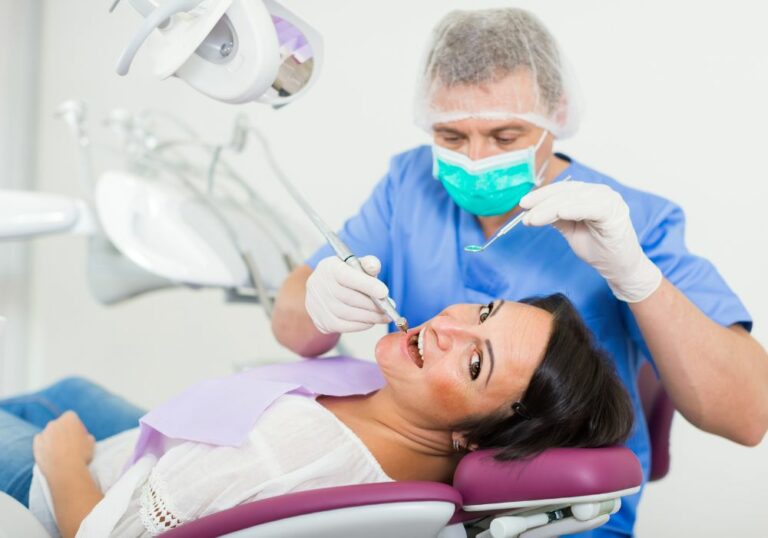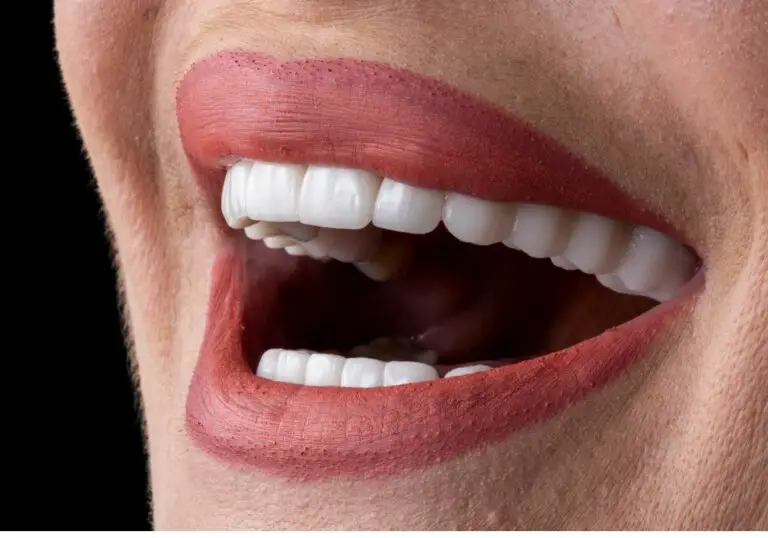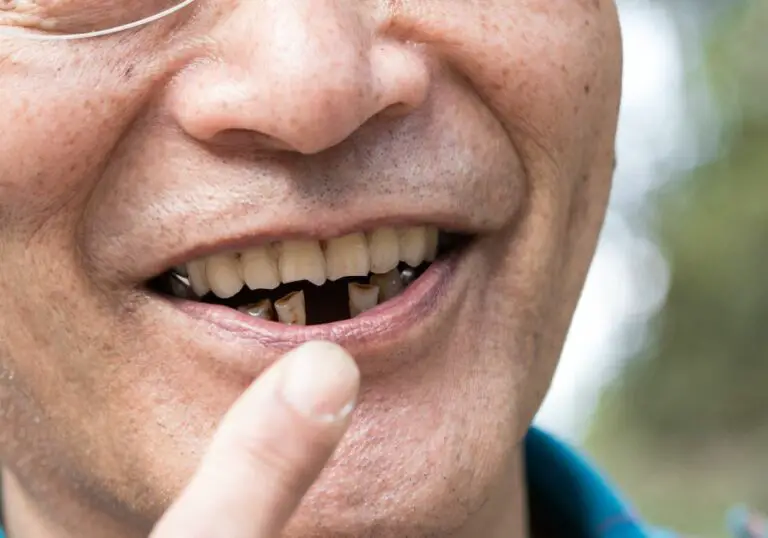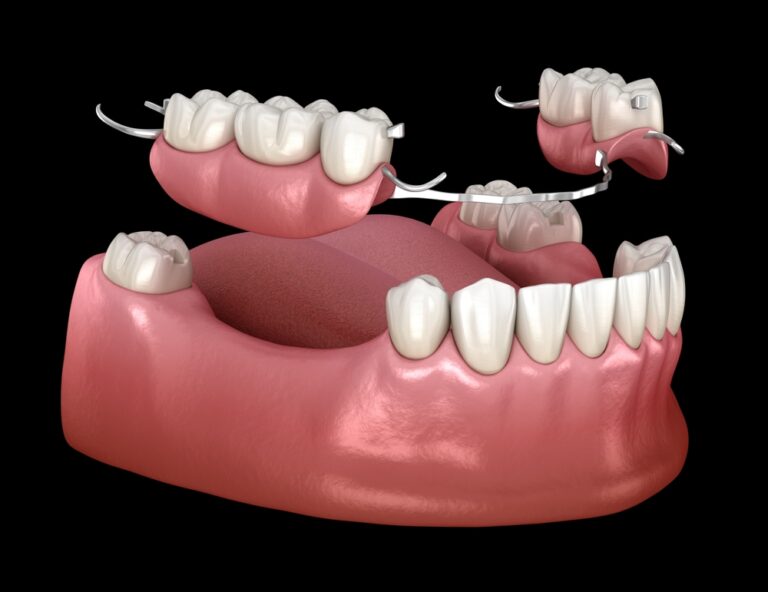Rotten or decayed front teeth are a common problem that can happen to anyone. Many people wonder if severely damaged front teeth can be saved or if extraction is inevitable. Thankfully, modern dentistry provides several effective options for restoring even significantly rotten front teeth.
What Causes Front Teeth to Rot?
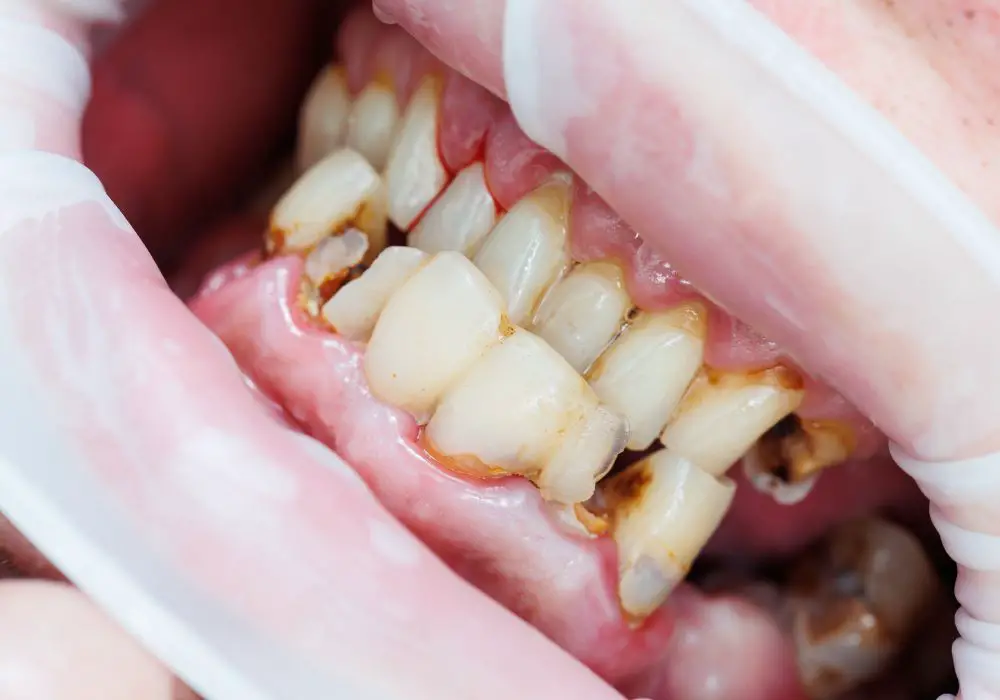
There are a number of potential causes of front tooth decay:
Poor Oral Hygiene Habits
Failing to properly brush and floss allows plaque, a sticky film of bacteria, to accumulate on teeth. The bacteria feed on sugars and starches left on teeth and excrete acids that erode tooth enamel. Front teeth decay easily because they are used constantly for biting, chewing, and tearing of food. Insufficient brushing also causes tartar or calculus deposits that cement plaque to teeth. Tartar can only be removed by professional dental cleanings.
Frequent Snacking and Sipping Sugar
The more often you snack and sip beverages containing sugar, the more cycles of acid attacks occur harming enamel. Things like candy, cookies, soda, sweetened coffee drinks, and dried fruit provide sustained sugar for plaque bacteria to produce enamel-demineralizing acid. Constant grazing and sipping can keep acid constantly bathing teeth leading to accelerated decay even without poor hygiene.
Dry Mouth
Saliva naturally washes away food debris and neutralizes acid. Insufficient saliva flow allows plaque bacteria and acid to remain on teeth longer accelerating decay. Hundreds of medications like antihistamines, decongestants, antidepressants and more reduce saliva production. Age-related changes and health conditions like diabetes and Sjogren’s syndrome also impair salivary gland function.
Teeth Grinding and Clenching
People who forcefully grind or clench (brux) their teeth put them under greater mechanical stress and wear. This can chip and weaken enamel making teeth more prone to cavities. It especially affects front teeth which bear the brunt of these forces. Stress and anxiety are major causes of bruxism.
Genetic Factors
Some people naturally have softer teeth, thinner protective enamel, or irregular tooth alignment that make teeth more decay-prone. Parents often pass these traits to their children, which is why dental decay can run in families.
Developmental Defects
Enamel defects and hollow areas like hypocalcification that occur during childhood tooth formation also increase decay risk. Trauma to developing teeth can interrupt and disrupt enamel mineralization.
Signs of Rotten Front Teeth
Front teeth with moderate to severe decay will show these signs:
- Brown, grey, black, or white spots on the enamel. White spots are an early sign of decay. Darker colors indicate more advanced rot penetrating the enamel.
- Visible pits, holes, or cavities in the outer enamel layer. These indicate decay has eaten through the enamel to the softer dentin underneath.
- Chipping, fracturing, transparency or fragile enamel from loss of mineral content.
- Sensitivity and pain when eating or drinking hot, cold, sweet, or acidic foods. Nerves are irritated as decay nears the inner pulp.
- Persistent toothache ranging from mild to severe and unpredictable in timing. Can come and go or be provoked by temperature changes.
- Gum inflammation – red, swollen, or painful gums around the decayed tooth. Infection is spreading.
- Halitosis – Bad breath and unpleasant taste due to rotting tissue and active bacterial infection.
Advanced decay destroys so much tooth structure that it can lead to fractures and tooth loss. Infection will often spread down the root leading to dental abscesses, facial swelling, and pus discharge through gums. Prompt treatment is essential to save severely decayed teeth and prevent further complications.
Can Decayed Front Teeth Be Saved with Fillings?
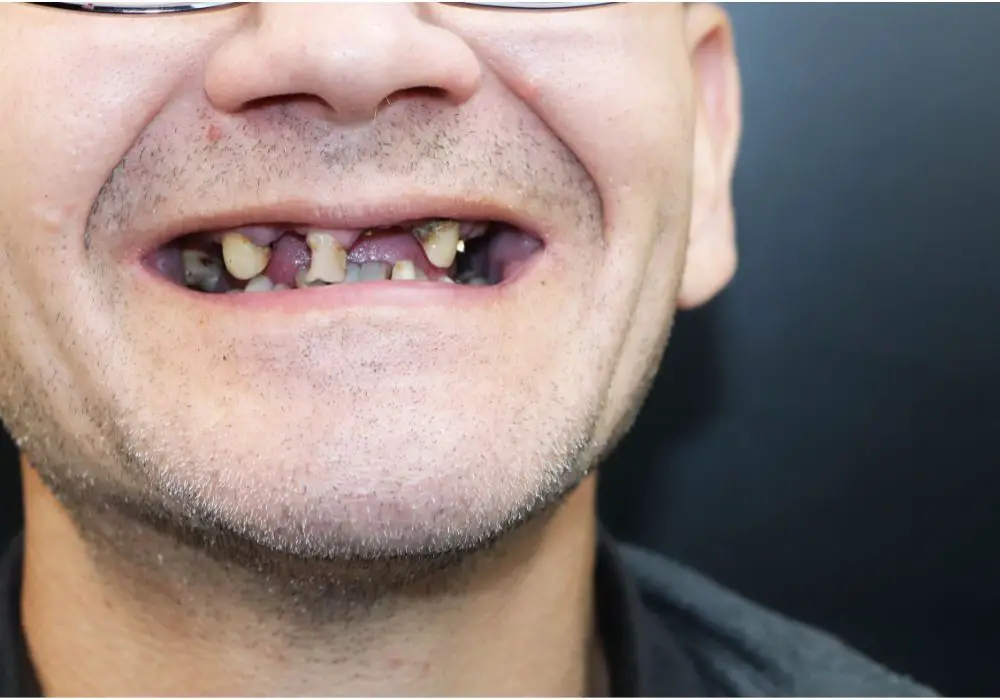
If detected early before reaching the inner pulp, many cavities can be repaired with dental fillings. Fillings remove decay and support remaining tooth structure. Several types are available:
- Composite resin fillings bond tightly to teeth and match natural shade while preserving more healthy tooth. They are commonly used to fill minor to moderate front tooth cavities.
- Glass ionomer fillings also bond to teeth and release fluoride to resist recurrent decay. They are tooth-colored but less durable for large cavities.
- Amalgam fillings are strong silver-colored metal alloys but darker color makes them less ideal for front teeth aesthetics. Composite and ionomer are preferred for visible smiles.
- Inlays and onlays are indirect fillings made outside the mouth to perfectly fit the tooth cavity, then bonded in place. They are more durable than direct fillings but involve two dental visits.
The amount of remaining healthy tooth needed to support a filling is key. If too much structure is already lost, a crown or other restoration may be required.
When is a Root Canal Necessary for a Rotten Front Tooth?
When decay penetrates deep into the tooth and infects the pulp tissue inside, root canal treatment is required to save the tooth and prevent the infection from spreading. The pulp contains nerves and blood vessels needed for tooth development and function. Without treatment an abscess will form as pus builds up inside the tooth. Symptoms warranting a root canal include:
- Severe toothache with sensitivity to hot and cold temperatures
- Lingering pain and discomfort biting or chewing on the tooth
- Dark tooth discoloration – the dying pulp tissue stains the clinical crown grey, brown, or black
- Facial swelling, lump or pimple on the gums near the infected tooth
- Drainage of pus through the gums
Root canal treatment involves drilling into the tooth pulp, removing all infected material from the pulp canals and chamber, then sealing and filling the interior space. A dental crown is usually required afterwards to reinforce the remaining tooth structure. With proper care, root-treated teeth can function normally for years. If left untreated, the infection will continue destroying the tooth from the inside out eventually requiring extraction.
Can Severely Decayed Teeth Be Replaced with Dental Implants?
When decay is too severe for fillings or root canals, the tooth must be extracted. But thanks to modern dental implants, the missing tooth can be beautifully replaced with a durable prosthetic that looks and functions like a natural tooth. An implant has 3 main parts:
- Titanium implant post – This artificial root is surgically embedded into the jawbone like an anchor. Over 3-6 months, bone will fuse tightly to the implant through osseointegration.
- Abutment – This connector is screwed into the implant post once healed to act as the new tooth stump and support the crown.
- Custom ceramic crown – Crafted to match surrounding teeth, the crown is attached to the abutment replacing the visible part of the tooth. Implants can last decades with good care and hygiene.
Implants preserve bone volume at the site to prevent shifting and sagging of surrounding teeth. Dentures and bridges can wear down and allow bone loss over time. With their stability, implants are the optimal tooth replacement option.
Prevention of Front Tooth Decay Through Proper Oral Hygiene
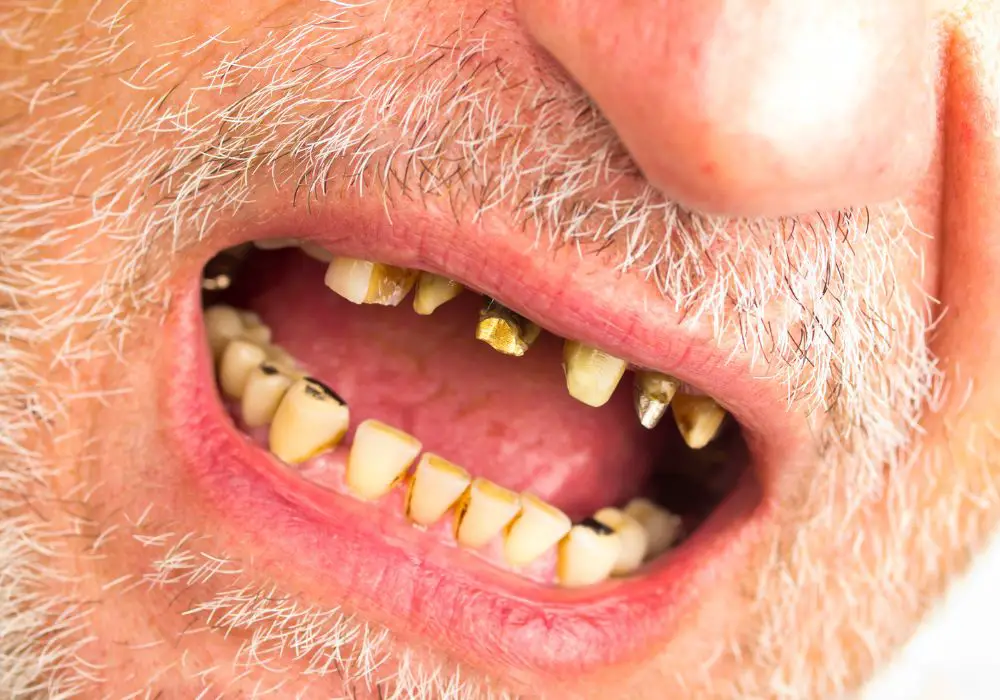
Preventing decay in the first place is ideal. Excellent oral hygiene and routine dental care can help keep teeth healthy and minimize cavities. Key prevention tips include:
- Brushing thoroughly twice a day with a soft toothbrush. Take time to brush every surface – especially where front teeth overlap.
- Flossing once daily to clear plaque between teeth. Floss carefully between lower front teeth.
- Rinsing daily with an antibacterial mouthwash to reduce cavity-causing bacteria.
- Limiting sugary snacks and acidic drinks like juice, soda, and sports drinks. Drink water whenever possible between meals.
- Eating tooth-healthy foods like cheese, nuts, fibrous fruits and vegetables that help scrub teeth clean.
- Drinking fluoridated water and using fluoride toothpaste for enamel strengthening.
- Having regular dental cleanings every 6 months. Professional cleanings remove disease-causing tartar deposits.
- Getting a dental exam every year to detect decay early when it is most treatable by simple fillings rather than more involved procedures.
Following healthy home care practices combined with professional care are the best ways to avoid dental decay and expensive tooth restorations. But if cavities do develop, today’s advanced options can often salvage even significantly decayed smiles.
Frequently Asked Questions
How can you tell if front teeth are severely decayed?
Look for dark tooth discoloration, big visible cavities, large fillings, temperature sensitivity, spontaneous pains, loose teeth, swollen gums, pimples on gums, and pus discharge. These indicate pulp infection and advanced decay. Dental x-rays help evaluate inner damage.
Do rotten teeth ever fall out on their own?
No. Severely decayed teeth won’t simply fall out on their own. The infection and inflammation can worsen leading to severe pain, tooth fractures, gum abscesses, and systemic health risks if bacteria spread internally. Rotten teeth require extraction by an oral surgeon or endodontic therapy if any healthy tooth structure remains.
Should I get my teeth whitened if they are decayed?
It’s advisable to treat any active decay first before whitening teeth. Whitening rotten teeth can increase temperature sensitivity and may make them more prone to fractures. For best results and safety, it’s better to fix all cavities with fillings, crowns, or implants first, allowing time to heal before considering cosmetic whitening.
Is a rotten front tooth dental emergency?
Front tooth decay does not constitute a true emergency unless you have uncontrolled pain, facial swelling, or pus discharge indicating a severe abscess. However, it’s important to have it evaluated promptly to prevent further loss of tooth structure and more complex restoration procedures. Make an appointment as soon as you can.
Can baby teeth cavities affect incoming permanent teeth?
Yes. Cavities in baby teeth can spread decay-causing bacteria to the permanent teeth developing underneath. This can lead to defects in the permanent enamel. It’s critical to fix all decay in baby teeth to avoid damaging permanent teeth before they erupt.
Conclusion
Severe decay of front teeth may seem hopeless, but modern dental treatments make it possible to restore even extensive destruction. While prevention is ideal, excellent oral hygiene and professional care will keep your smile healthy. If cavities do develop, restorations like fillings, dental crowns, root canals, and implants can often rescue even significantly rotten front teeth. With early intervention and advances in materials and techniques, you can keep your teeth for life.

